Even though you’re asking the question of whether you should use individual hand tools or a multi-tool to tackle whatever tasks you have in mind, I’m going to assume you already have some or all of the tools you need to do the job. You might even already have a multi-tool or two.
What we want to know is when are individual tools better than a multi-tool.
We carry tools with us in anticipation of needing tools to handle the next MacGyver situation we find ourselves in. Or we carry tools with us because of the things we do, like cycling, hiking or doing our job.
We think of multi-tools more often these days because multi-tools have come a long way in the last 10 years. From the first simple unit, Tim Leatherman cobbled together in 1983 with a basic set of common hand tools to hundreds of variations big and small that cater to whatever type of tasks you want to get in to. Multi-tools just make life easier!
So what’s your preference? Do you follow the individual tool school of thought and you prefer to lose your tools one at a time? Or are you mad for multi-tools and you think multi-tools are not great for anything but good for everything?
Why would you choose individual tools over a multi-tool?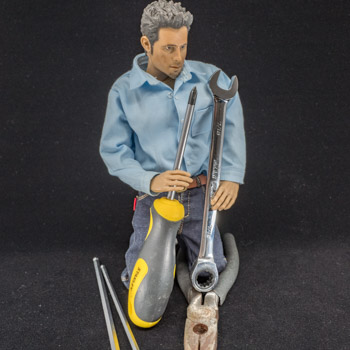
If the job needs…..
- a specialist tool that can’t be found on a multi-tool
- a very big tool to get some leverage
- a very small tool to get into a tiny space
- two of the same type of tool to be used at once
The Individual Tools General Rule
“If you have a big job, go for the big tools!”
Why would you choose a multi-tool over individual tools?
If you need…..
- to carry the tools on your body or a bag on your body
- to carry the tools long distances
- tools that are all (or just about all) included in one multi-tool
- a range of tools but you’re not really sure what the next job you’re going to need to do
- a range of tools and the alternative to a multi-tool is no tools at all
The Multi-Tool General Rule
“If you need maximum functions with less weight and space, go for the multi-tool!”
The individual tool based approach
Let’s say you’re at home and you have a tool shed full of tools. You have a job to do around the yard and all you have to do is pull your hand tools out of the shed and get to work. In this case, why would you leave your individual tools in the shed and use the multi-tool clipped to your belt? It’s not that inconvenient to go get your individual tools. Doesn’t make sense to me to not use them.
But what if you’re using your individual tools and you needed to unscrew a Phillips head and you’ve forgotten to take that screwdriver from the shed? In that case, why go back to the shed, why not just grab the multi-tool on your belt and easily get the job done? Convenience and capability rule the day.
Another situation – you’re doing a job using the tools from the toolbox on the back of your truck. You’re using your individual tools because they’re convenient and they are more capable of handling the job. But why wouldn’t you drop a good multi-tool into your toolbox for the convenience but also add to the tool capabilities you are carrying in your truck? It’ s a small investment for a lot of peace of mind and convenience.
The multi-tool based approach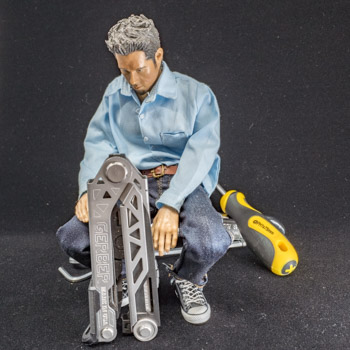
Let’s say you’ve taken the family to meet the grandparents for lunch at the local pizza restaurant. Your little boy is having trouble keeping his pants up because his belt is too big. You grab the multi-tool clipped to your pocket, open up the awl and make a new hole in his belt. Lunch saved. You have a full-sized awl in the shed at home but the convenience and capability of the multi-tool wins the day.
Or maybe, you’re out in your yard and you see a couple of small branches overhanging a path. You grab the multi-tool off your belt and deploy the wood saw. You trim the branches up then notice another group of trees on the other side of the yard that needs a lot of trimming and some of the branches are thick.
You’ve got a full-sized wood saw but you loaned it to your neighbor. Time to go and get it back and put it to work. It’s not that your multi-tool isn’t capable, it could do the job but would take more effort. Your wood saw is convenient enough to get hold of (who knows, your neighbor might even offer you a beer as thanks for the loan) so why not use the individual tool?
Carrying a multi-tool is like having a smartphone. You’re debating a fact with your wife over breakfast. You have a computer but your smartphone is at your elbow so rather than go to the computer to google the right answer, you look it up on your smartphone – it’s convenient, quick and capable.
What the best for specific types of activities – individual tools or a multi-tool?
For cyclists – multi-tool or individual tools?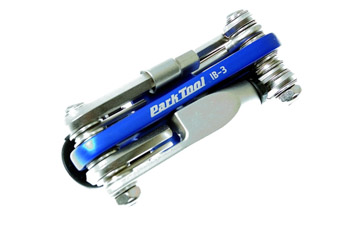
Cyclists who ride on or off road will need tools at some time or another to deal with maintenance issues that invariably happen while they’re away from their bike shed. The challenge for cyclists is because they have to carry everything with them everywhere they pedal they understandably want to travel as light as possible. If they don’t at least carry basic tools, they could be stranded on the side of the road or trail.
This isn’t a new problem for cyclists so there are a lot of multi-tools designed to cater to the needs of the cyclist in distress. You should do an audit of the different things on your bike you could need to adjust and make sure the multi-tool you carry can cope with them.
The main tools you’ll find on cycling specific multi-tools are flat and Phillips screwdriver heads and common bike hex bit sizes. Admittedly it’s fairly rare but snap a chain and the only way you can fix it is with a chain breaker so you might want to have one of these on
]\your multi-tool. A spoke wrench is also handy.
Other tools you could consider are an adjustable wrench and a cassette remover but these tools are more for the touring cyclist than the sports cyclist who if they ever needed a cassette remover while they were out on a ride would be calling their partner for a lift home rather than trying to fix it!
One option would be to carry a light multi-tool for the common small repair jobs and if you thought you really needed it, an individual tool for a bigger job.
For sports fisherman – multi-tool or individual tools?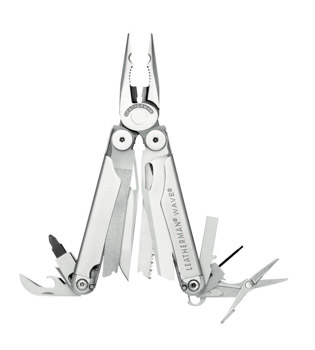
Fishermen have tool needs to achieve success in their sport. Success is, of course, measured by catching fish. The tools that can help them do that are a good set of needle nose pliers to remove tricky hooks, a good knife for cutting line and other stuff plus some screwdrivers and hex bit driver. None of these tools are particularly rare in multi-tools so you have a good selection to choose from. Just choose a quality brand and model – you can’t go too far wrong with something like Leatherman’s most popular model – the Wave.
You could carry individual tools with you because you have to carry a bit of fishing gear anyway. But why would you bother trying to keep all your tools together, not losing them and searching for each one when you need one? Just grab a multi-tool.
For the tradesman – multi-tool or individual tools?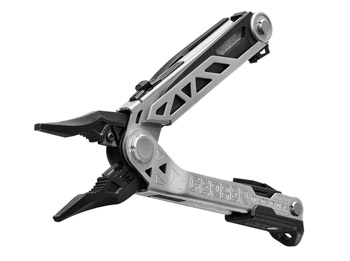
If you make your living using tools, you’re going to want the right tools and the best tools for the job. You don’t have time to be using a tool if it’s not capable of doing what you need. For you, an individual tool is probably going to be the right tool. Also, you have the carrying capacity to have a toolbox with you and another one in your service truck so space and weight aren’t a big deal.
But why wouldn’t you clip a full-sized multi-tool to your belt as well? Rather than hunt around for that screwdriver or a knife, you can grab your multi-tool and quickly do what you need. A robust multi-tool like a Leatherman SuperTool 300 (review here) or a Gerber Center Drive (review here) would fit the bill.
For hikers and campers – multi-tool or individual tools?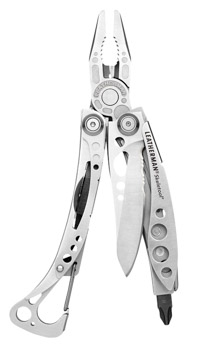
Hikers are like cyclists and they need to carry their tools on their body or a bag on their body. A low weight and not taking up a lot of space are obviously going to be top of the things they’re looking for. Campers are also interested in keeping the weight of their gear down as well being compact.
You can get a lot of tool functionality in a low weight unit by choosing a multi-tool over individual tools. A model like the Leatherman Skeletool could fit the bill. I like the Skeletool CX so much I recommended it for my Lightweight Multi-Tool crown on my Recommended Multi-Tools page. It will give you a good pair of pliers, knife, bottle opener, flathead and Phillips screwdriver and can be clipped or carabinered to yourself or your gear. But if you need a good ax or hammer then you’ll need to add them to your toolkit alongside your multi-tool. By the way, you can get camping axes that have other tools built in. Could be the best of both worlds tool for you.
The answer
Should you carry a multi-tool or individual tools? If you agree with me, you can see the answer is a no-brainer – it’s all about what convenience and capability you need!
If you anticipate that what you need tools for can be covered by the convenience of a multi-tool that saves weight and space and that has the tool capabilities that you want, then the multi-tool is the answer for you.
If you anticipate that the tools in a multi-tool don’t have the capabilities you think you need and you have space and can carry the weight, then individual tools are the answer for you.
Of course, the answer could be both. Your main tool solution is a multi-tool but it’s backed up by a few well-chosen individual tools or vice versa. You mainly carry individual tools but one other tool you also carry is a multi-tool to add versatility and convenience to your toolset. And it doesn’t have to be forever either. Over time your tool needs can change so you might need to adjust to your new activities and interests.
Hey, it’s your toolset and I’m sure you can use the tips here to figure it out!
What do you prefer? Individual tools or a multi-tool or both. When are individual tools better for you than a multi-tool? Let me know in the comments below.
Multi-Tools – Never Leave Home Without One!
